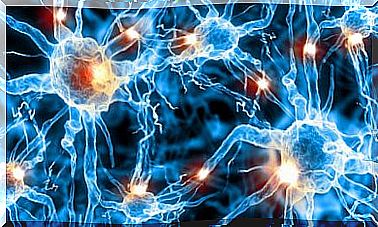Capgras Syndrome
Imagine that you meet someone who, apparently, treats all the people in his social circle normally but, there comes a time when everything changes. Suppose that individual no longer recognizes his mother; moreover, he fervently believes that she is not who she claims to be and that she has been impersonated with an identical impostor. This is Capgras syndrome.
It is a disorder, part of a psychotic process. The patient has the delusional belief that a close person, with whom there is an emotional bond, has been replaced by another person, an identical substitute. This causes an intense fear and also a rejection towards that person. Usually this happens with a family member with whom you live.
Etymology
The name of this syndrome, as in other cases, is due to the person who made its discovery. In this case, Jean Marie Joseph Capgras, the French psychiatrist who evidenced this disease with the name of “double illusion” in the early 1920s, in the twentieth century.
Capgras reported the case of a 74-year-old woman who claimed that her husband had been replaced by a stranger. The patient easily recognized other family members. Everyone except her husband. A whole psychiatric antecedent of a disease, at that time, unknown.
Capgra syndrome symptoms

The most obvious symptoms of the disease are between rejection and avoidance of contact with a family member with whom there is a close emotional bond.
In fact, psychiatric professionals classify it as a loss of emotional recognition ; that is, you know who you have in front of you, you see him, you remember him, but the emotional bond that united them has been forgotten, now considering him a stranger.
Often, the symptoms of Capgras syndrome have similarities with other dissociative elements of different human conditions, such as: paranoid ideas, delusional conviction, serious family or relationship problems, normality with the rest of the people.
This is so because both the pattern of suspicion and that of the impossibility of making him change his mind with arguments are very present, almost indistinguishable from a delusion.
Finally, note that it is an extremely rare psychopathological condition, which is not usually a reason for consultation. However, it is very disturbing for those who suffer from it.
Causes
The studies carried out on this disorder are still scarce, which makes it difficult to know precisely the cause. Another difficulty that must be added to the study of this disease is the similarity that the symptoms of Capgras syndrome have with other psychotic disorders.
During the 90s, several studies and investigations were carried out on some of the possible triggers of this distortion of human behavior. Below are some of the relevant data obtained:
- In a 1990 paper published by the British Journal of Psichiatry, psychologists Haydn Ellis and Young Andy hypothesized that patients with Capgras syndrome may have a “mirror” image of prosopagnosia ; that is, their conscious ability to recognize faces was intact, but they could have damage to the system that produces automatic emotional activation in front of familiar faces. This could lead to the experience of not recognizing a close person.
- In 1997, Haydn Ellis and his colleagues published a study of 5 Capgras delirium patients (all diagnosed with schizophrenia) and confirmed that although they could consciously recognize faces, they did not show a normal automatic emotional arousal response.
Diagnosis

For the diagnosis of this disease, both a neurologist and a psychiatrist (or neuropsychiatrist) must perform the following tests:
- Verbal, phonological and semantic fluency test, to evaluate language, since a reduction in verbal fluency has been observed in these patients.
- Test of the cubes, of the Wais test, to measure the visuospatial-visuoconstructive capacity.
- Multitask test to corroborate executive functions, which depends a lot on the frontal lobes.
- Verbal tests to check the state of memory, since alterations in this ability have been seen in patients with this syndrome.
Capgras syndrome treatment

Unfortunately, the causes of Capgras syndrome are unknown, so there is still no specific treatment for this disorder. The measures taken are palliative; that is, an attempt is made to control the symptoms mainly through the use of some psychotropic drugs such as:
- Anticonvulsants are also often used as supportive treatment.
- Psychological therapy to ensure that the individual can carry out a cognitive reconstruction.
- Antipsychotics are used to combat the delusional conviction of the patient. As well as the use of anxiolytics as well.
Capgras syndrome is not an easy disorder to deal with. Hence the importance of the person having adequate professional assistance.








